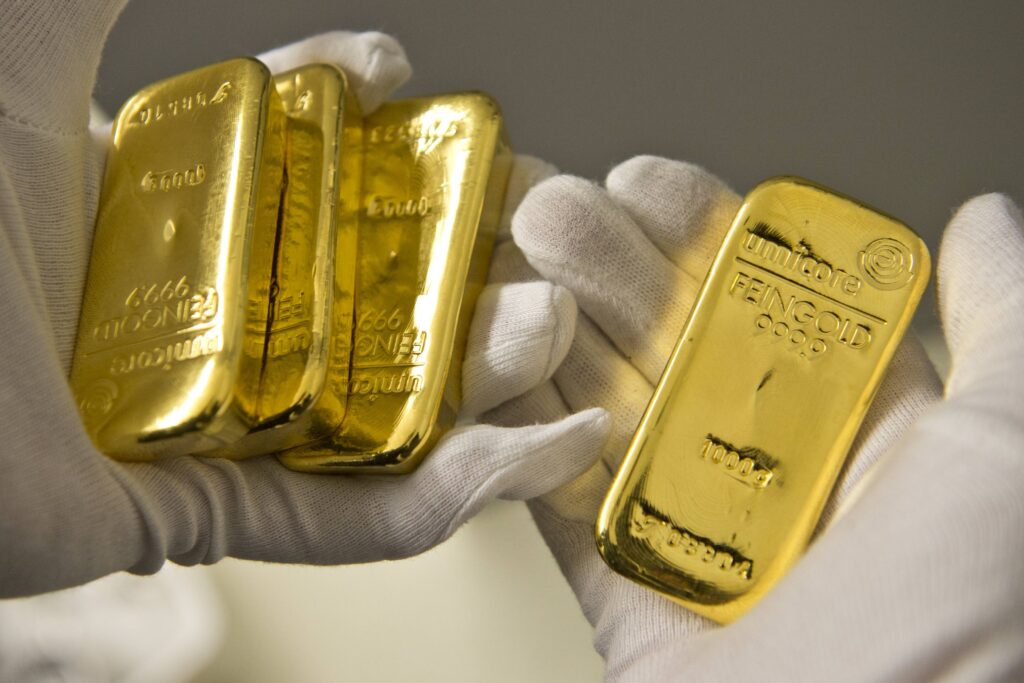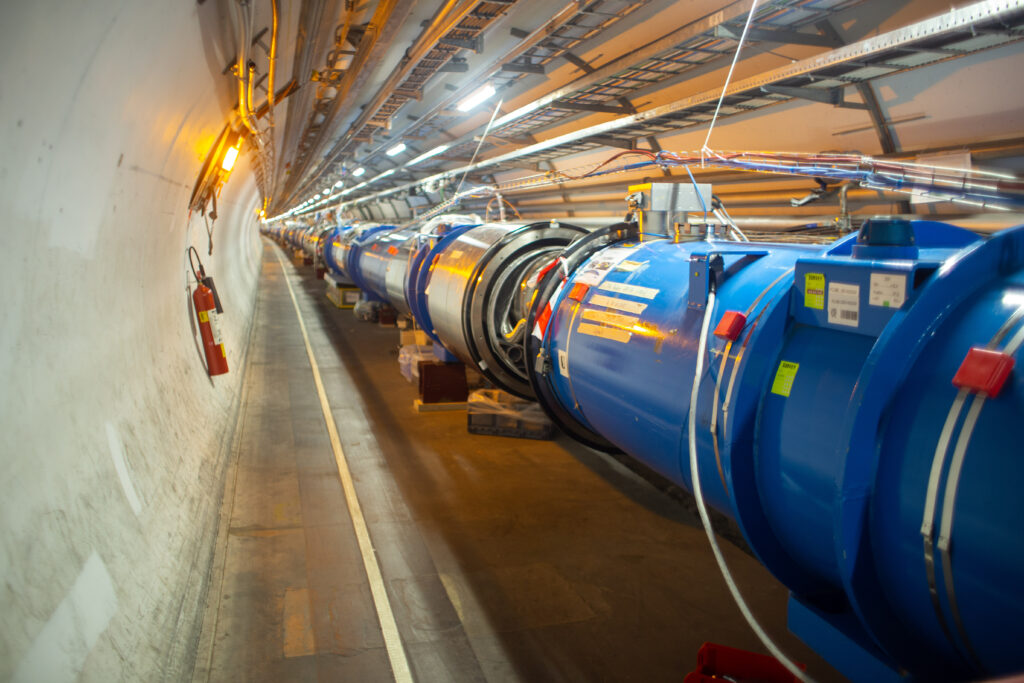- Scientists strike gold in Switzerland replicating the Big Bang
- Near-misses instead of head-on nucleus collisions create the element
- “89,000 gold nuclei are produced every second”

Scientists in Switzerland have accidentally created gold during an experiment designed to mimic the conditions of the Universe just after the Big Bang.
The discovery came as CERN scientists smashed lead atoms together at extremely high speeds in Europe’s Large Hadron Collider (LHC).
Read more: Rubik’s Cube-Solving World Record Beat By Robot
It is part of the ALICE experiment, which is specifically designed to study heavy-ion collisions and help scientists understand how matter formed and evolved in those earliest moments.
Read more: Cat gets shiny gold tooth worth thousands
Despite lead and gold being different elements, a lead atom has exactly three more protons than gold. So, in theory, if you remove those extra protons, you get gold, right? Well, yes, and that’s exactly what scientists in Geneva managed to do, though in a pretty roundabout way.
The discovery

As detailed in a paper published last week in Physical Review C, the scientists accidentally produced tiny amounts of gold – and we mean extremely tiny, like 29 trillionths of a gram kind of tiny.
When lead nuclei – the central cores of atoms – collide head-on, the strong nuclear force kicks in and they end up completely destroyed.
However, scientists discovered that when the atoms nearly miss each other instead, the powerful electromagnetic fields around them can actually trigger the nuclei to transform into different elements.
So when one lead nucleus just barely brushes past another, the electric field between them is so intense that it makes the nuclei shake and sometimes lose a few protons in the process. And if it happens to shed exactly three protons? You’ve hit the jackpot: gold.
Officials at CERN wrote: “Moreover, the very high speed at which lead nuclei travel in the LHC (corresponding to 99.999993% of the speed of light) causes the electromagnetic field lines to be squashed into a thin pancake, transverse to the direction of motion, producing a short-lived pulse of photons.”
Even though the gold atoms created were temporary, it’s still being hailed as a fascinating and significant result. Uliana Dmitrieva of the ALICE collaboration stated that their work is the first to “systematically detect and analyze the signature of gold production at the LHC experimentally”.
How do scientists know it was actually gold?
The scientists were able to confirm the gold using special equipment called zero-degree calorimeters, which detect and count the protons that were shaken loose from the lead nuclei.
“The results also test and improve theoretical models of electromagnetic dissociation which, beyond their intrinsic physics interest, are used to understand and predict beam losses that are a major limit on the performance of the LHC and future colliders,” says John Jowett of the ALICE collaboration.
The scientists can’t see the gold nuclei, but they detect them indirectly. They estimate that around 89,000 gold nuclei are produced every second during the near-miss collisions – along with smaller amounts of thallium (one proton fewer than lead) and mercury (two protons fewer).